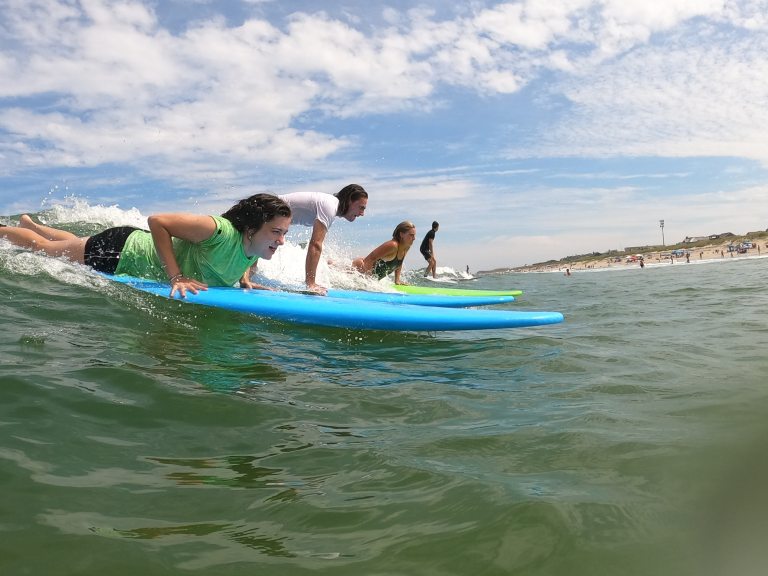Senior Julia Elliott spent a semester learning about coastal ecology and policy with the Park Service at the Outer Banks Field Site.

When Julia Elliott, a political science major and environmental sciences minor, was looking for a hands-on project to work on during her final year at Carolina, she heard about a unique opportunity from an alumna of the UNC Institute for the Environments’ field site program.
The Carolina senior was afraid she would feel out of place in the semester-long science program conducting research at the Outer Banks but quickly realized her political science background brought a new perspective to the challenges facing North Carolina’s coastline.
“The Outer Banks Field Site caught my interest because it was combining policy and the environment, which is something I, throughout my time at Carolina, became more interested in studying,” Elliott says.
One of five sites hosted by the Institute for the Environment, the Outer Banks Field Site offers undergraduate students a multidisciplinary approach to the sustainable management of coastal resources. Each semester 10-25 students study applied policy and ecology and complete an internship with community leaders or local agencies while living in Manteo, North Carolina.
Elliott spent her internship with the National Park Service at Cape Hatteras National Seashore.

“Working alongside biological technicians with the Park Service was unlike anything I had ever done before, but my mentors were all so excited when I asked questions and were happy to teach me how to use equipment in the field,” Elliott says. “I learned a lot about the state’s ecology and coastal policy both in the field and in the classroom.”
During her time with the Park Service, Elliott sorted through archives to find the original plans for the bridges that now connect the string of islands that make up the Outer Banks, surveyed coastal bird populations and learned to identify different species and searched for sea turtle nests and helped the hatchlings crawl to the ocean.
Elliott’s coursework also brought her outdoors and helped her develop friendships with her fellow field site students.

“In my coastal ecology class, I learned about ghost crabs and their importance as an indicator species,” Elliott says. “Everyone in my class woke up at 6:30 [a.m.] and went to the beach together and watched the sunrise while we completed our lab.”
The fall semester cohort at the Outer Banks Field Site also completed a capstone project together by following up on an ecological survey done in Buxton Woods in 1988. Elliott and her classmates went to coordinates recorded 40 years ago and compared the current species to those growing in that exact spot in 1988, as well as interviewing community members on their perception of the woods.
After completing her semester at the Outer Banks, Elliott says her time in the “outdoor classroom” helped her learn about herself and how to build community.
“I have a new confidence in my ability to learn new skills and go outside of my comfort zone,” Elliott says. “I lived and learned with a group of people who have the same passion for the environment, and we built a little community during our semester together.”
By Madeline Pace, University Communications
